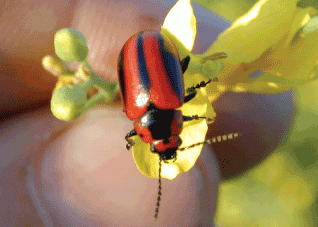Farmers in Southern Alberta need to spray to control the insects
By Diego Flammini
Assistant Editor, North American Content
Farms.com
The current infestations of diamondback moths across parts of Alberta aren’t what Scott Meers, insect management specialist with Alberta Agriculture and Forestry, is used to seeing.
“It’s an outbreak I don’t think we’ve ever seen before,” he told Call of the Land today. “At least not in my 30 years with Alberta Agriculture.”
In particular, some canola farmers in Southern Alberta should consider spraying to control the insects as the crop reaches maturity, Meers said.
“We have to be skeptical of whether or not the insect can do the damage we think it will when it’s a little earlier in the life stage,” he told Call of the Land. “If producers and agronomists haven’t been checking the canola, they need to keep an eye on it right up until the last week before swathing.”
A July edition of CanolaWatch mentioned red turnip beetles could be turning up in areas with unharvested crops. The insect then went quiet, but red turnip beetle activity could pick up again, Meers said.

“The reason for that is the adult form actually goes through a summer hibernation and now they’re just starting to wake up to feed and lay eggs,” he said during his Call of the Land appearance. “You’re starting to see them in canola in central Alberta.
“They’ll be laying eggs in the soil over winter and then the larvae will hatch over spring. They could do a little bit of damage in canola.”
And Alberta farmers growing soybeans and sunflowers need to be aware of the painted lady butterfly.
“The eggs are being laid now and we’re going to get another generation of them,” Meers said. “We had very little need to spray (but) some soybeans did get sprayed.”